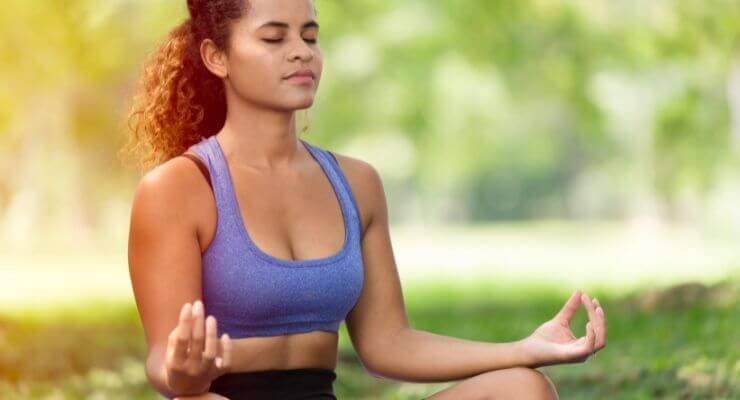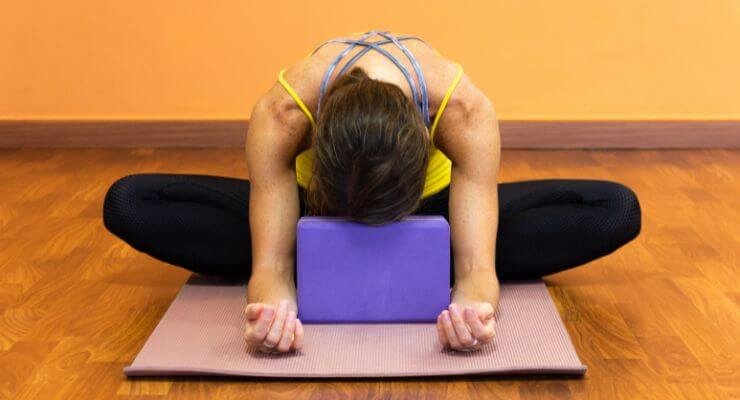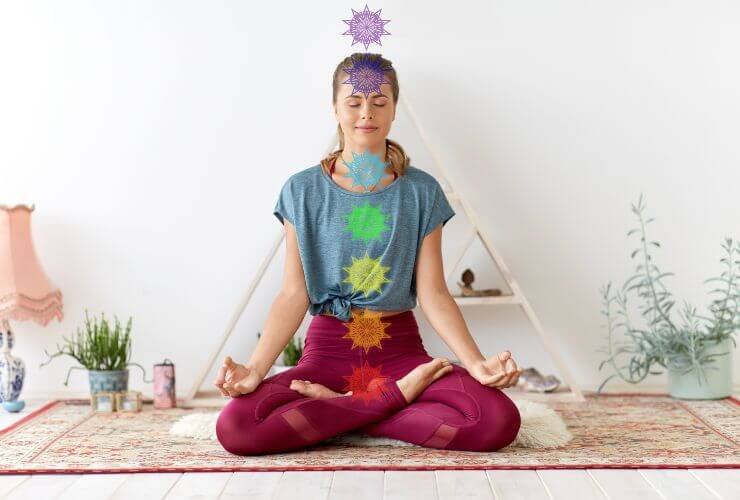Hatha yoga is a popular style of yoga that is practiced by millions of people around the world. It is a branch of yoga that focuses on physical postures, breathing techniques, and meditation. The term “hatha” is derived from two Sanskrit words, “ha” meaning sun and “tha” meaning moon, which represents the balance of opposing forces in the body.
Hatha yoga is known for its ability to improve physical strength, flexibility, and balance. It is a gentle and accessible style of yoga that is suitable for people of all ages and fitness levels. In a typical hatha yoga class, students will practice a series of yoga poses, or asanas, and focus on their breath to create a sense of relaxation and calmness. The practice is designed to help students connect with their bodies and minds, and to cultivate a sense of inner peace and well-being.
Origins of Hatha Yoga
Hatha yoga is a branch of yoga that focuses on physical postures and breathing techniques to prepare the body for meditation. The word “hatha” is derived from two Sanskrit words, “ha” meaning sun and “tha” meaning moon. The name refers to the balance of masculine and feminine energies within the body, which is believed to be necessary for achieving spiritual enlightenment.
The origins of hatha yoga can be traced back to ancient India. The earliest mention of yoga can be found in the Rigveda, a collection of ancient Sanskrit hymns that dates back to around 1500 BCE. The Rigveda describes yoga as a practice that involves controlling the mind and body to achieve a state of spiritual enlightenment.
Over time, various schools of yoga emerged, each with their own unique practices and philosophies. Hatha yoga is believed to have originated in the 11th century CE, when a sage named Goraksha Nath compiled a collection of texts known as the Hatha Yoga Pradipika. This text outlines the physical postures, breathing techniques, and meditation practices that are associated with hatha yoga.
While hatha yoga has its roots in ancient India, it has since spread to become a popular form of exercise and meditation around the world. Today, there are many different styles and schools of hatha yoga, each with their own unique approach to the practice. However, the primary goal of hatha yoga remains the same: to achieve a state of unified consciousness through physical and mental discipline.
Core Principles of Hatha Yoga
Hatha Yoga is a form of yoga that emphasizes physical postures and breathing techniques to achieve a balance between the mind and body. The core principles of Hatha Yoga are centered around two main practices: breathing techniques and posture practices.
Breathing Techniques
Breathing techniques, or pranayama, are an essential part of Hatha Yoga. Pranayama involves controlling the breath to regulate the flow of energy in the body. The practice of pranayama helps to calm the mind, reduce stress, and increase focus and concentration.
There are various types of pranayama techniques that can be used in Hatha Yoga, including:
- Ujjayi breath: A deep, slow breathing technique that involves inhaling and exhaling through the nose while constricting the back of the throat.
- Kapalbhati breath: A rapid, forceful breathing technique that involves exhaling forcefully through the nose while pulling the belly in.
- Nadi Shodhana breath: A breathing technique that involves alternating between breathing through the left and right nostrils, using the fingers to close off one nostril at a time.
Posture Practices
Posture practices, or asanas, are the physical postures that are used in Hatha Yoga to increase strength, flexibility, and balance. Asanas are designed to stretch and strengthen the muscles, improve circulation, and promote relaxation.
There are many different asanas that can be used in Hatha Yoga, including:
- Mountain pose: A standing posture that involves standing with the feet hip-width apart, the arms at the sides, and the shoulders relaxed.
- Downward-facing dog: A posture that involves starting on all fours, then lifting the hips up and back to create an inverted V-shape.
- Warrior II: A standing posture that involves standing with the feet wide apart, then turning one foot out and bending the knee, while keeping the other foot parallel to the back of the mat.
In conclusion, the core principles of Hatha Yoga are centered around breathing techniques and posture practices. By incorporating these practices into their daily routine, individuals can achieve a balance between the mind and body, improve their overall health and well-being, and reduce stress and anxiety.
Benefits of Hatha Yoga
Hatha yoga is a form of yoga that combines physical postures (asanas) with breathing techniques (pranayama) to balance and align the body, mind, and spirit. Practicing hatha yoga regularly can have numerous benefits for physical and mental health.
Physical Health Benefits
Hatha yoga can help improve physical health in several ways. Here are some of the benefits:
- Increased Flexibility: Hatha yoga involves stretching and holding poses, which can help improve flexibility and range of motion in the joints.
- Stronger Muscles: Each pose in Hatha yoga is its own strength and endurance exercise, which can help build muscle strength and tone.
- Better Balance: Hatha yoga poses often require balance, which can help improve balance and stability.
- Improved Breathing: Hatha yoga emphasizes breathing techniques, which can help improve lung function and overall breathing.
- Reduced Pain: Studies have found that hatha yoga can help reduce pain in people with chronic conditions such as arthritis and back pain.
Mental Health Benefits
In addition to physical health benefits, hatha yoga can also have numerous mental health benefits. Here are some of the benefits:
- Reduced Stress: Practicing hatha yoga can help reduce stress and anxiety by promoting relaxation and mindfulness.
- Improved Mood: Studies have found that hatha yoga can help improve mood and reduce symptoms of depression.
- Enhanced Focus: Hatha yoga involves concentration and focus, which can help improve cognitive function and enhance mental clarity.
- Better Sleep: Practicing hatha yoga can help improve sleep quality and duration, which can have numerous benefits for overall health and well-being.
Overall, hatha yoga can be a valuable practice for improving both physical and mental health.
Hatha Yoga Vs Other Yoga Styles
Hatha Yoga is one of the most popular yoga styles around the world. However, there are several other yoga styles that people practice as well. Here is a comparison of Hatha Yoga with some of the other popular yoga styles:
Hatha Yoga Vs Vinyasa Yoga
Vinyasa Yoga is a dynamic flow-based yoga style that synchronizes breath with movement. In contrast, Hatha Yoga is a slower-paced yoga style that focuses on holding poses for a longer duration. Vinyasa Yoga is more cardio-intensive and can help with weight loss, while Hatha Yoga is better suited for improving flexibility and balance.
Hatha Yoga Vs Ashtanga Yoga
Ashtanga Yoga is a physically demanding yoga style that involves a set sequence of poses that are performed in a specific order. In contrast, Hatha Yoga has no set sequence and is more flexible in terms of the poses that can be included in a class. Ashtanga Yoga is suitable for those who want a more challenging and structured practice, while Hatha Yoga is better suited for beginners and those who prefer a more relaxed pace.
Hatha Yoga Vs Bikram Yoga
Bikram Yoga is a type of hot yoga that involves practicing a set sequence of 26 poses in a heated room. In contrast, Hatha Yoga can be practiced in any temperature and does not have a set sequence of poses. Bikram Yoga can help with detoxification and weight loss, while Hatha Yoga is better suited for improving flexibility and balance.
Hatha Yoga Vs Yin Yoga
Yin Yoga is a slow-paced yoga style that involves holding poses for a longer duration, typically between 3 to 5 minutes. In contrast, Hatha Yoga involves holding poses for a shorter duration, typically between 30 seconds to a minute. Yin Yoga is better suited for improving flexibility and joint mobility, while Hatha Yoga is better suited for improving overall fitness and reducing stress.
Hatha Yoga Vs Kundalini Yoga
Kundalini Yoga is a spiritual yoga style that involves practicing a set sequence of poses, breathing exercises, and meditation techniques. In contrast, Hatha Yoga is a physical yoga style that focuses on the body and breath. Kundalini Yoga is better suited for those who want to explore the spiritual aspects of yoga, while Hatha Yoga is better suited for those who want to focus on the physical benefits of yoga.
In conclusion, Hatha Yoga is a versatile yoga style that can be practiced by anyone, regardless of their fitness level or experience with yoga. While there are several other yoga styles to choose from, Hatha Yoga remains a popular choice because of its focus on overall fitness, flexibility, and balance.
How to Start Practicing Hatha Yoga
Hatha yoga is a great way to improve your physical and mental well-being. If you are new to yoga, starting with Hatha yoga is a good idea. Here are some tips on how to start practicing Hatha yoga.
What to Expect in a Hatha Yoga Class?
Before attending your first Hatha yoga class, it is important to know what to expect. In a typical Hatha yoga class, you will start with breathing exercises, followed by a series of yoga poses. The poses may be held for a few breaths or for several minutes. The class will end with a relaxation or meditation session.
Finding a Beginner’s Class
If you are new to yoga, it is best to start with a beginner’s class. Look for a yoga studio or gym that offers Hatha yoga classes for beginners. You can also find online classes if you prefer to practice at home.
Best Hatha Yoga Poses
Some of the best Hatha yoga poses for beginners include:
- Mountain Pose (Tadasana)
- Tree Pose (Vrikshasana)
- Warrior I (Virabhadrasana I)
- Downward-Facing Dog (Adho Mukha Svanasana)
- Child’s Pose (Balasana)
These poses help improve flexibility, balance, and strength.
Home Practice Tips
If you want to practice Hatha yoga at home, here are some tips:
- Start with a warm-up, such as Sun Salutations.
- Choose a few poses to practice each day.
- Hold each pose for at least 5 breaths.
- End your practice with a relaxation or meditation session.
Remember to listen to your body and never push yourself too hard. With regular practice, you will start to see the benefits of Hatha yoga.
Common Hatha Yoga Poses
Hatha yoga is a popular style of yoga that focuses on physical postures, breathing techniques, and meditation. Many of the poses used in Hatha yoga are accessible to beginners and can be modified to suit different skill levels and physical abilities. Here are some of the most common Hatha yoga poses:
Mountain Pose (Tadasana)
Mountain Pose is a foundational pose in Hatha yoga and is often used as a starting point for other poses. To perform this pose, stand with your feet hip-width apart and your arms at your sides. Press down through your feet and engage your leg muscles. Lift your chest and lengthen your spine. Hold the pose for several breaths.
Standing Forward Fold (Uttanasana)
Standing Forward Fold is a gentle forward bend that stretches the hamstrings and lower back. To perform this pose, stand with your feet hip-width apart and fold forward from the hips. Let your head and arms hang down towards the floor. Hold the pose for several breaths.
Downward-Facing Dog (Adho Mukha Svanasana)
Downward-Facing Dog is a popular pose in Hatha yoga and is often used as a transition pose between other poses. To perform this pose, start on your hands and knees. Spread your fingers wide and press your palms into the floor. Lift your hips up and back, straightening your arms and legs. Hold the pose for several breaths.
Child’s Pose (Balasana)
Child’s Pose is a gentle resting pose that can be used at any time during a Hatha yoga practice. To perform this pose, start on your hands and knees. Lower your hips back towards your heels and stretch your arms out in front of you. Rest your forehead on the floor and hold the pose for several breaths.
Tree Pose (Vrksasana)
Tree Pose is a balancing pose that strengthens the legs and core muscles. To perform this pose, stand with your feet hip-width apart. Shift your weight onto your left foot and lift your right foot off the ground. Place the sole of your right foot against the inside of your left thigh. Press your hands together in front of your chest and hold the pose for several breaths. Repeat on the other side.
Warrior II (Virabhadrasana II)
Warrior II is a standing pose that strengthens the legs and improves balance and stability. To perform this pose, stand with your feet wide apart. Turn your left foot out to the side and your right foot in slightly. Bend your left knee and extend your arms out to the sides, parallel to the floor. Hold the pose for several breaths and repeat on the other side.
Overall, these common Hatha yoga poses can help improve flexibility, strength, and balance, while also promoting relaxation and stress relief.
Potential Risks and Precautions
While Hatha Yoga is generally considered safe for most people, there are some potential risks associated with the practice that individuals should be aware of. It is important to consult with a healthcare provider before starting any new exercise program, especially if you have any pre-existing medical conditions or injuries.
Common Risks
Some common risks associated with Hatha Yoga include:
- Muscle strains and sprains: Overstretching or holding poses incorrectly can lead to muscle strains and sprains, particularly in the neck, shoulders, and lower back.
- Joint injuries: Certain poses, such as inversions and arm balances, can put a lot of pressure on the joints and increase the risk of injury, especially if performed incorrectly or without proper support.
- Wrist pain: Many Hatha Yoga poses require weight-bearing on the hands and wrists, which can lead to pain and discomfort, particularly for individuals with pre-existing wrist injuries.
- Headaches: Certain poses, such as inversions and forward folds, can increase blood flow to the head and cause headaches, particularly for individuals who are prone to migraines.
Precautions
To minimize the risk of injury, individuals should take the following precautions when practicing Hatha Yoga:
- Listen to your body: If a pose feels uncomfortable or painful, back off or modify the pose as needed. Do not push yourself beyond your limits.
- Use props: Props such as blocks, straps, and blankets can help support the body and prevent injury, particularly for beginners or individuals with limited flexibility.
- Warm up and cool down: Before starting a Hatha Yoga practice, it is important to warm up the body with gentle movements and stretches. After the practice, take time to cool down and relax the body.
- Practice under the guidance of a qualified instructor: A qualified Hatha Yoga instructor can provide guidance on proper alignment and modifications, and can help prevent injury.
By taking these precautions and being aware of the potential risks associated with Hatha Yoga, individuals can safely enjoy the many benefits of this ancient practice.
Frequently Asked Questions
What are the main components of Hatha yoga?
Hatha yoga is a practice that focuses on physical postures (asanas) and breathing techniques (pranayama). The practice also includes meditation and relaxation techniques to promote overall well-being.
What is the difference between Hatha yoga and Ashtanga yoga?
Hatha yoga and Ashtanga yoga are both physical practices that involve postures and breathing techniques. However, Ashtanga yoga is a more vigorous and structured practice that follows a set sequence of postures, while Hatha yoga is more adaptable and can be tailored to the individual’s needs.
Is Hatha yoga suitable for beginners?
Yes, Hatha yoga is suitable for beginners. It is a gentle practice that can be modified to suit different skill levels and physical abilities. It is a good way to build strength, flexibility, and balance while also promoting relaxation and stress relief.
What is the history of Hatha yoga?
Hatha yoga has its roots in ancient India and is believed to have been developed over 5000 years ago. The practice was refined and documented in the Hatha Yoga Pradipika, a text written in the 15th century. Today, Hatha yoga is one of the most popular forms of yoga practiced around the world.
What are some good resources for learning Hatha yoga online?
There are many online resources available for learning Hatha yoga, including YouTube channels, online classes, and instructional videos. Some popular resources include Yoga with Adriene, DoYogaWithMe, and Yoga Journal.
How do you pronounce Hatha yoga correctly?
Hatha yoga is pronounced “HAH-tah YOH-gah.” The emphasis is on the first syllable of each word.





